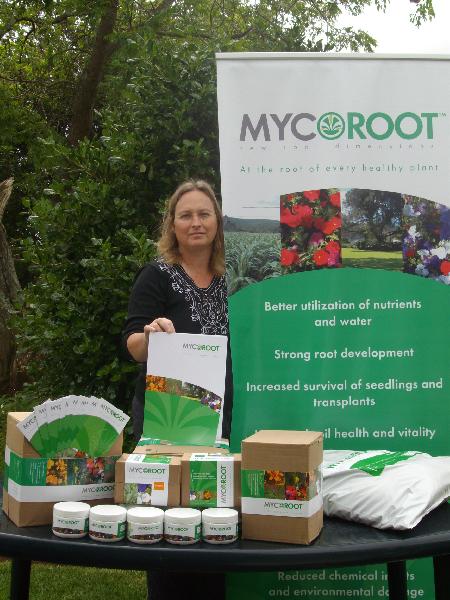
Dr Joanna Dames, Head of Biochemistry, Microbiology & Biotechnology, has spent the last 20 years researching fungi that have now taken granular form and are being used to perfect soccer pitches for stadiums to be used in the world cup soccer.
At present Ellis Park Stadium has been given a makeover using the fungal product, Mycoroot, and a second world cup stadium is in the process of being Mycorooted. Dr Dames said that, “The Ellis Park stadium was so well maintained with minimum damage even after matches that interest in the Mycoroot product has soared”. Mycoroot is now a recommended product for use at the stadiums.
“I am keeping up with the growing demands but I am afraid that I may not continue to keep it up if interest keeps growing at this rate. What a nice problem to have. However, I do have enough stock to provide Mycoroot for all 2010 soccer stadiums. As a result, I am making plans to increase my production.”
The initial project, in agreement with Rhodes, started in 2001 when Dr Dames and some of her mycorrhizal colleagues were awarded a government grant through the Innovation Fund Trust for the development of the techniques required to produce a commercially available soil amendment product containing indigenous fungal species.
This project resulted in the commercialised product called Mycoroot, which started selling slowly in 2005 and has now escalated to the level of supplying soccer stadiums for the soccer world cup. Dr Dames says, “It is a slow process because you don’t see immediate results. But those who wait it out always come back for more.”
As the name implies these fungi form a special relationship with the roots of approximately 90% of all plants. This relationship is a symbiosis in which two very different organisms co-exist and benefit from each other.
The fungus commonly found in undisturbed soils, grows by means of fungal filaments, which are straw-like structures, the filaments grow both inside and outside of the roots and are able to extend the plant rooting system giving them the advantage of being able to exploit the soil environment for nutrients, particularly phosphorus, and water more effectively.
These nutrients are carried to the plant and exchanged for sugars produced by the plant’s green leaves. Plant roots take up nutrients from soil but in so doing rapidly form depletion zones around the roots, the AM fungal filaments can grow quickly crossing these zones and search for nutrients away from the plants providing access to nutrients in hard to reach places.
The product contains indigenous isolates of the fungus derived from South African soils and is currently sold in an inert carrier which can be incorporated into soils and potting mixtures or applied directly when transplanting by placing the product into the planting hole.
Integral to the development of the product were some proof of product trials, which were conducted on various agricultural crops. These showed an increase in yield of chicory ranging from 30-50%, increased tolerance of tomato seedlings to drought and enhanced growth of beans, shallots and swiss chard, among others.
Trials have not specifically been conducted on landscape plants and turf grass, nevertheless the general non-specific nature of the relationship cannot be ignored and these fungi benefit a large number of different plant species. Feedback from clients in these industries has always been positive.
Pic: Dr Joanna Dames.

